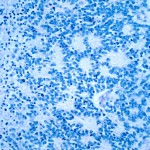The disease spreads rapidly to far reaching parts of the body, like the brain or the bones in the lower legs.
“Neuroblastoma is almost symptomless. Symptoms that are present are usually dismissed as being something minor. Often, it is not until the tumours are so large that they are pressing or squashing organs, nerves or pathways and causing physical problems such as walking or going to the toilet, that the disease is detected.”
When a child is diagnosed with Neuroblastoma, they are very quickly assessed using a variety of testing methods such as blood and urine tests, MRI and CT scans, and a biopsy of the tumour. Once this has been done, the disease will be ‘staged’.
There are five stages of Neuroblastoma. These are:
Stage 1
When a single tumour has been detected early and no disease has spread. The tumour is removed surgically usually with no need for chemotherapy.
Stage 2
Applies to a single tumour site that cannot be completely surgically removed. Disease may also be present in some lymph nodes local to the tumour. Chemotherapy will usually be required.
Stage 3
Refers to a large tumour that has spread across the body. Surgery is not an option at this point and chemotherapy is needed to reduce the size of the tumour.
Stage 4
The tumour can be of any size, but is usually very large, often with several further tumours detected. The disease has metastasized to far reaching parts of the body such as lymph nodes, bones and the brain.
Stage 5
A special stage that is found in infants under the age of one. It is a small tumour that has spread to other parts of the body, but usually regresses naturally without any intervention.
The biopsy will also look for genetic factors within the tumour. The main one being the MYC-N gene. This is an oncogene that ‘amplifies’ the disease and has a very unfavourable prognosis.
The age of the child, and other factors will also be taken into account, and combined with all of the above used to assign the diagnosis a risk category. These are:
- Low risk – the child can usually be observed without the need for treatment, or with surgery alone.
- Intermediate risk – the child will be treated with chemotherapy and surgery.
- High risk – the child will be treated with aggressive chemotherapy, surgery, stem cell transplant, radiotherapy and biological therapy.
Neuroblastoma affects around 100 children in the UK each year. Around 75 of those will be stage 4, and around half will have the MYC-N gene. The majority of diagnosis are classed as High Risk.
NeuroblastomaHigh risk Neuroblastoma has unfavourable prognosis with therapies currently available in the UK. Less than 20% of children survive post five years, with the majority succumbing to the disease within two years of diagnosis. More successful therapies are available outside of the UK that have been shown to improve survival by around 20%. These therapies come at a huge cost and must be paid for by the family.
Neuroblastoma has an extremely high relapse rate. There is currently no UK protocol for relapsed Neuroblastoma, though depending on the location of the relapse further treatments may be tried. Relapses often occur in the brain and should this happen, the only option is treatment in America costing in excess of half a million pounds.

Neuroblastoma





